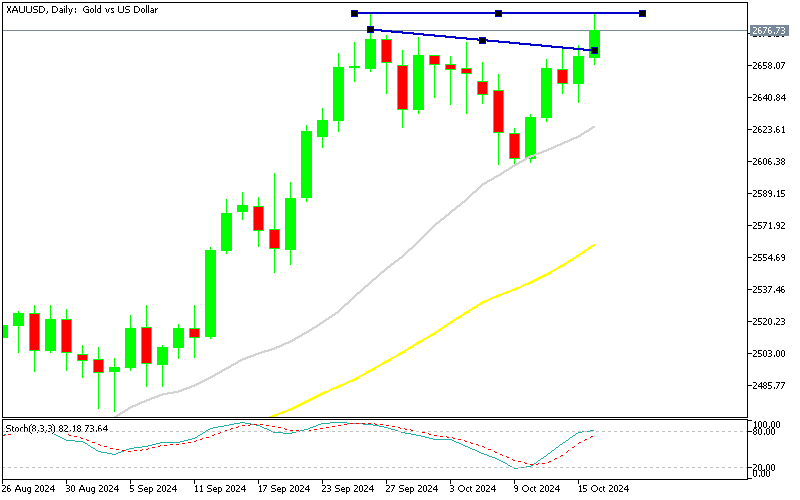Early last week, financial markets saw a shift in risk sentiment due to the absence of a broader conflict in the Middle East, which led to a decline in gold prices. Even though September’s US CPI and PPI inflation figures came in higher than expected, they didn’t contribute much to gold’s appeal. Instead, support for gold held around the 20 SMA on the daily chart at roughly $2,605, sparking a rebound. Additionally, as 10-year Treasury yields declined for a third consecutive session, gold became more attractive to investors seeking safe-haven assets. This upward momentum continued through the week.
Gold Chart Daily – Bouncing Off the 20 SMA
Geopolitical Tensions and Safe-Haven Demand
On the geopolitical front, Israeli Prime Minister Benjamin Netanyahu reassured French President Emmanuel Macron that he would not agree to a ceasefire with Hezbollah. However, he also assured the US that there would not be a larger-scale attack on Iran, reducing concerns over a potential wider war. Despite these reassurances, the ongoing instability in the region has added an extra layer of uncertainty, increasing investor interest in safe-haven assets like gold.
Central Bank Policies and Gold’s Prospects
Even with the US dollar’s recent strength, gold has shown remarkable resilience. Although the Federal Reserve has held firm on rates, there is speculation that other major central banks—the ECB, BOE, and BOC—might start easing sooner rather than later. Gold bulls often point to potential central bank dovishness as a positive factor for gold, even if this isn’t directly supported by the current economic data. With gold’s recent attempt at its previous record high stalling, the question remains: will gold continue to push higher in the coming weeks, potentially ending the year with a rally above $2,700?





